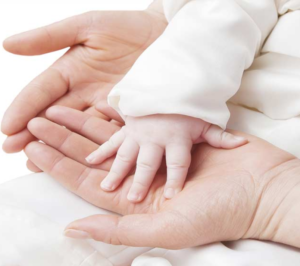Urinary health is an important but often overlooked part of overall well-being. Millions of people experience issues such as urinary incontinence (loss of bladder control) and overactive bladder (OAB), which can significantly affect quality of life. While these conditions are more common with age, they are not an inevitable part of getting older—and there are many steps you can take to reduce your risk, strengthen your bladder, and maintain better control.
Understanding Incontinence and Overactive Bladder
Before discussing prevention, it’s helpful to understand what these terms mean:
Urinary Incontinence – The unintentional leakage of urine. There are several types, including:
Stress incontinence: Leakage triggered by coughing, laughing, sneezing, or exercise.
Urge incontinence: Sudden, strong urge to urinate followed by involuntary leakage.
Mixed incontinence: A combination of both.
Overactive Bladder (OAB) – A condition marked by a sudden, frequent urge to urinate, often leading to urgency incontinence.
Both conditions can be caused by weakened pelvic floor muscles, nerve problems, lifestyle habits, or medical conditions like diabetes and prostate enlargement.
Strengthen Your Pelvic Floor Muscles
The pelvic floor muscles support the bladder and help control urination. Weakness in these muscles is a leading cause of incontinence.
Kegel exercises are the gold standard. To do them:
Identify the right muscles by trying to stop your urine mid-flow (only for identification, not as a regular exercise).
Tighten and hold the contraction for 3–5 seconds, then relax for the same amount of time.
Repeat 10–15 times, three times a day.
Over time, stronger pelvic floor muscles can significantly reduce leakage and improve bladder control.
Maintain a Healthy Weight
Excess body weight puts added pressure on the bladder and pelvic floor. Studies show that even modest weight loss can improve incontinence symptoms.
Focus on a balanced diet rich in fruits, vegetables, lean proteins, and whole grains.
Incorporate regular physical activity, such as walking, swimming, or yoga.
Not only does this help bladder health, but it also benefits heart health, blood sugar control, and joint strength.
Monitor Fluid Intake
It might seem logical to drink less water to prevent leakage, but dehydration can actually irritate the bladder and worsen symptoms.
Aim for 6–8 glasses of water per day, unless otherwise advised by your doctor.
Avoid “overhydrating” with excessive fluids, as this can increase urgency and frequency.
Reduce fluids a few hours before bedtime if nighttime urination is a concern.
Limit Bladder Irritants
Certain foods and drinks can make bladder symptoms worse:
Caffeine (coffee, tea, soda, energy drinks) – increases bladder activity.
Alcohol – irritates the bladder and increases urine production.
Spicy foods, citrus fruits, and artificial sweeteners – can worsen urgency in sensitive individuals.
Try reducing or eliminating these triggers and monitor whether your symptoms improve.
Practice Bladder Training
Bladder training is a technique to gradually increase the time between bathroom visits:
Start by tracking how often you urinate in a day.
Set a schedule to go slightly less often than usual (for example, every 2–3 hours).
When the urge arises earlier, try to delay urination by a few minutes.
Over time, this helps “retrain” the bladder, improving capacity and reducing urgency.
Manage Constipation
Chronic constipation can worsen incontinence and OAB by putting pressure on the bladder.
Eat a fiber-rich diet (whole grains, beans, fruits, vegetables).
Drink enough fluids.
Stay active to keep bowel movements regular.
Avoid straining during bowel movements, as this weakens pelvic floor muscles over time.
Quit Smoking
Smoking is linked to chronic coughing, which puts pressure on the bladder and pelvic floor. It’s also a risk factor for bladder cancer. Quitting smoking not only supports bladder health but improves overall well-being.
Stay Physically Active
Regular exercise supports weight management, bowel function, and muscle strength—all factors that affect bladder control.
Low-impact activities are especially helpful, such as:
Walking
Cycling
Swimming
Pilates or yoga (great for core and pelvic floor strength)
Avoid high-impact exercises that worsen leakage, unless you’ve built strong pelvic support.
Pay Attention to Medications
Some medications, such as diuretics (water pills) or sedatives, can worsen bladder symptoms. Never stop a prescribed medication on your own, but if you notice worsening symptoms, speak with your doctor. There may be alternative options.
Seek Medical Guidance Early
Bladder issues can feel embarrassing, but they are very common and highly treatable. A urologist can:
Rule out infections or underlying conditions.
Suggest pelvic floor physical therapy.
Prescribe medications that relax the bladder.
Offer minimally invasive or surgical options if conservative measures don’t work.
The earlier you seek help, the easier it is to manage symptoms.
Final Thoughts
Bladder health plays a major role in daily comfort, confidence, and quality of life. While incontinence and overactive bladder are common, they are not something you have to live with silently. By strengthening your pelvic floor, maintaining a healthy weight, avoiding irritants, and practicing bladder training, you can take proactive steps toward prevention.
And remember: if symptoms are persistent or interfere with your daily routine, consult a urologist. With the right guidance, effective treatments, and lifestyle adjustments, most people experience significant improvement.


